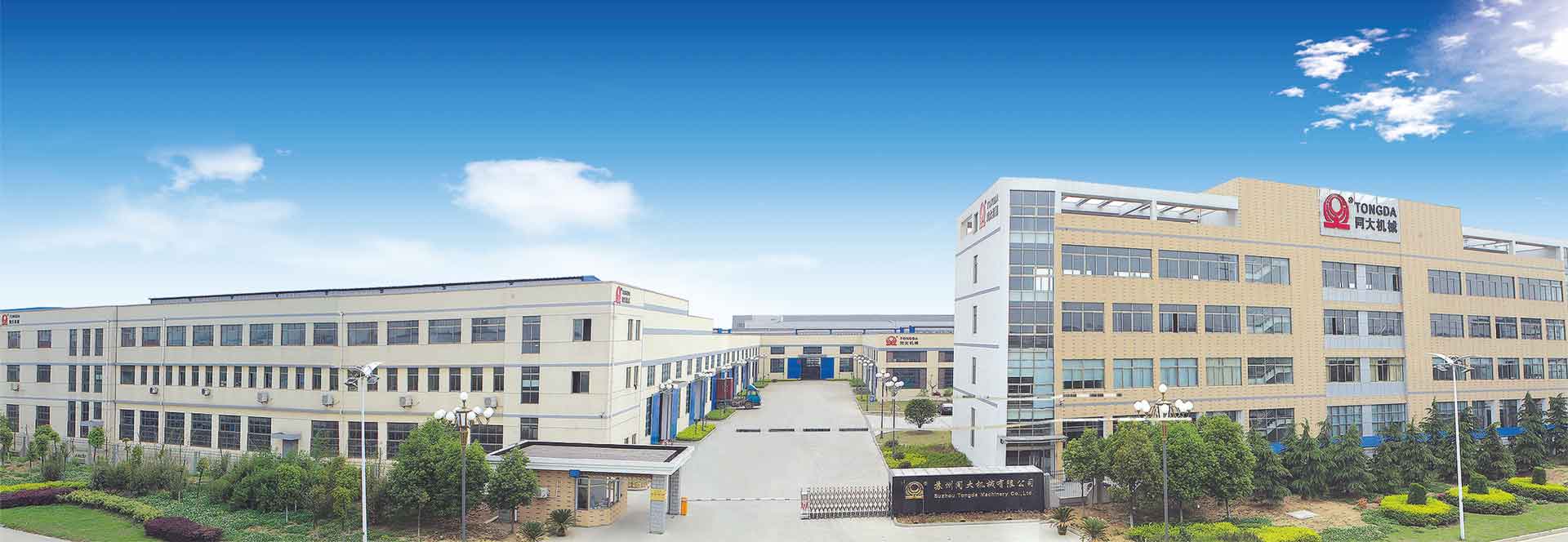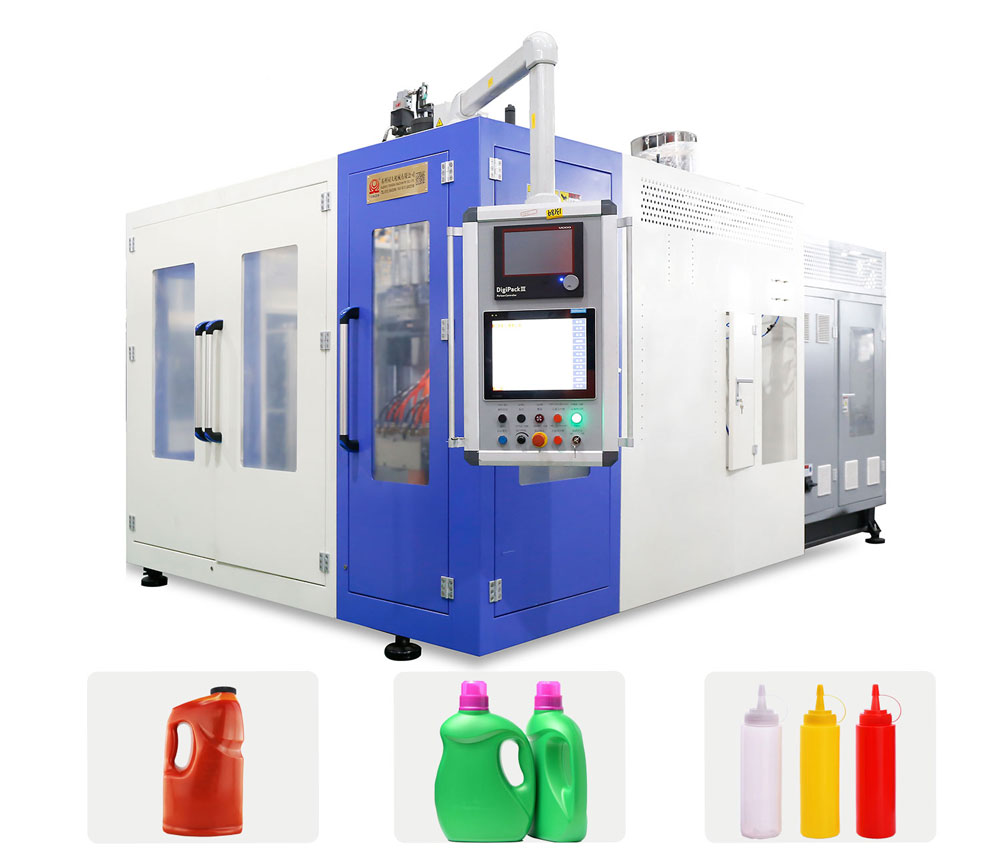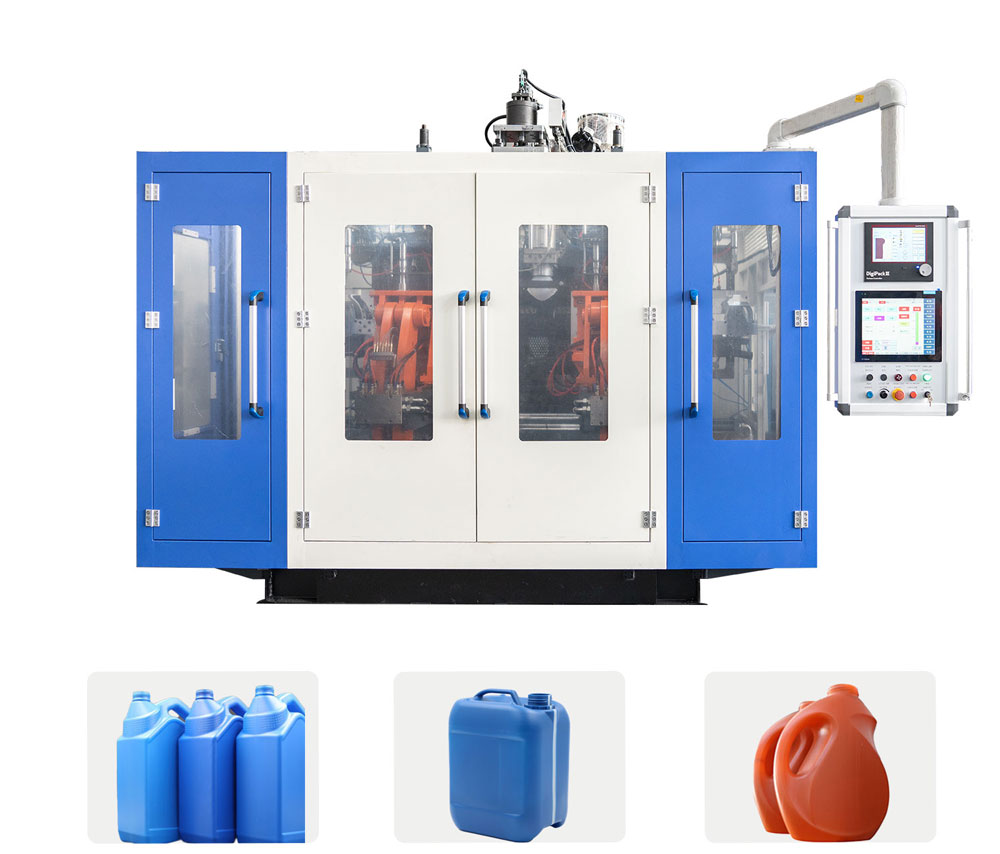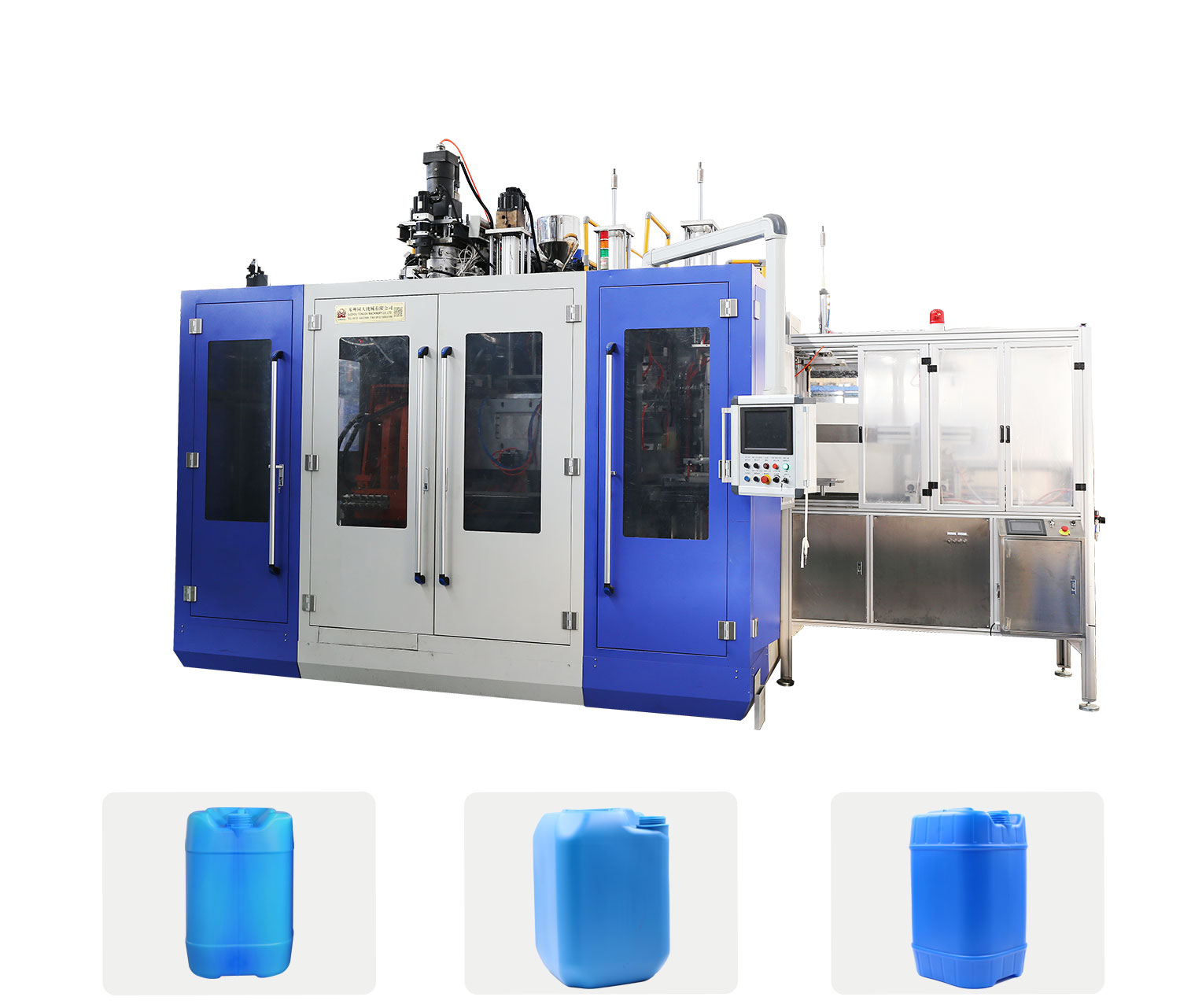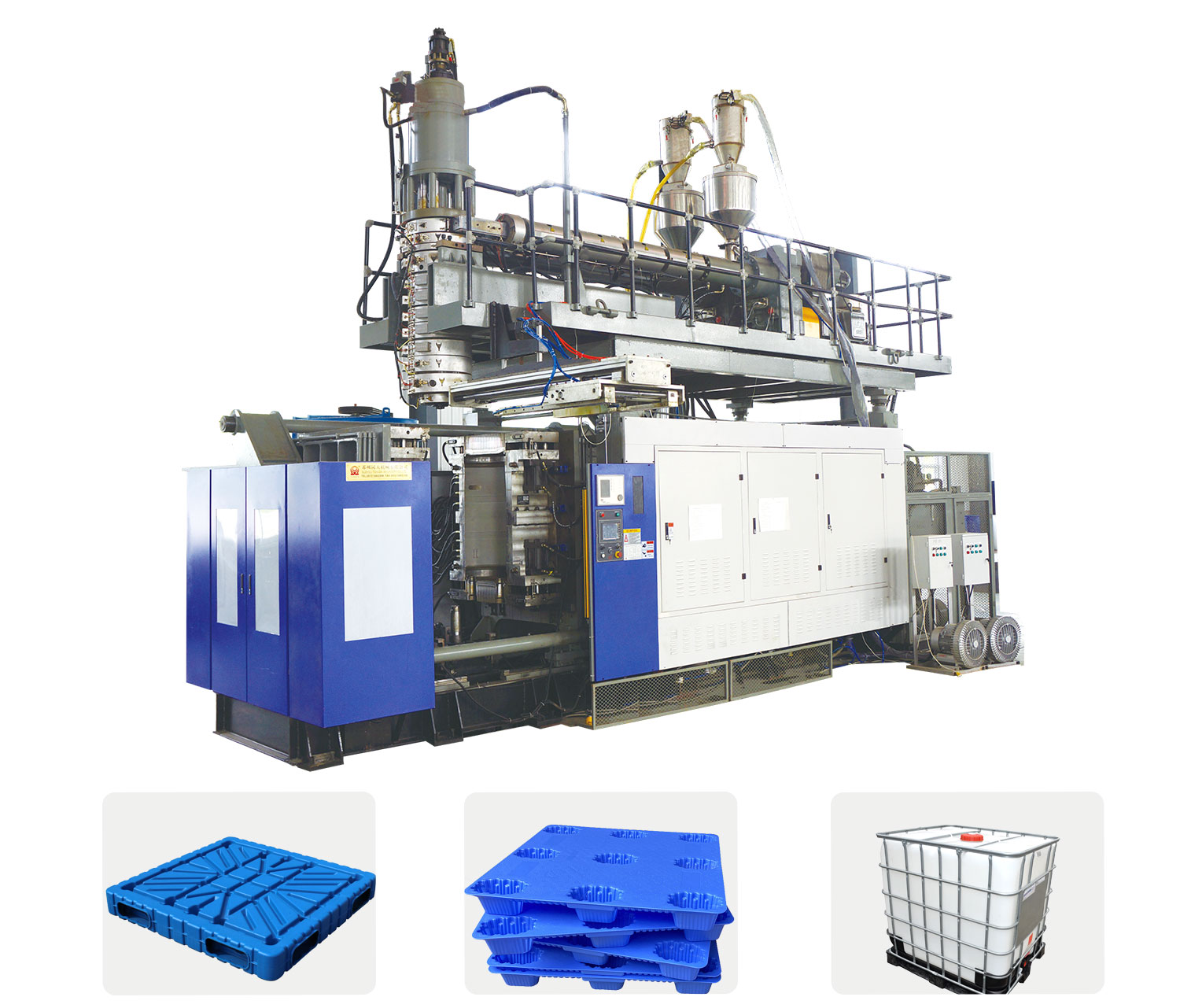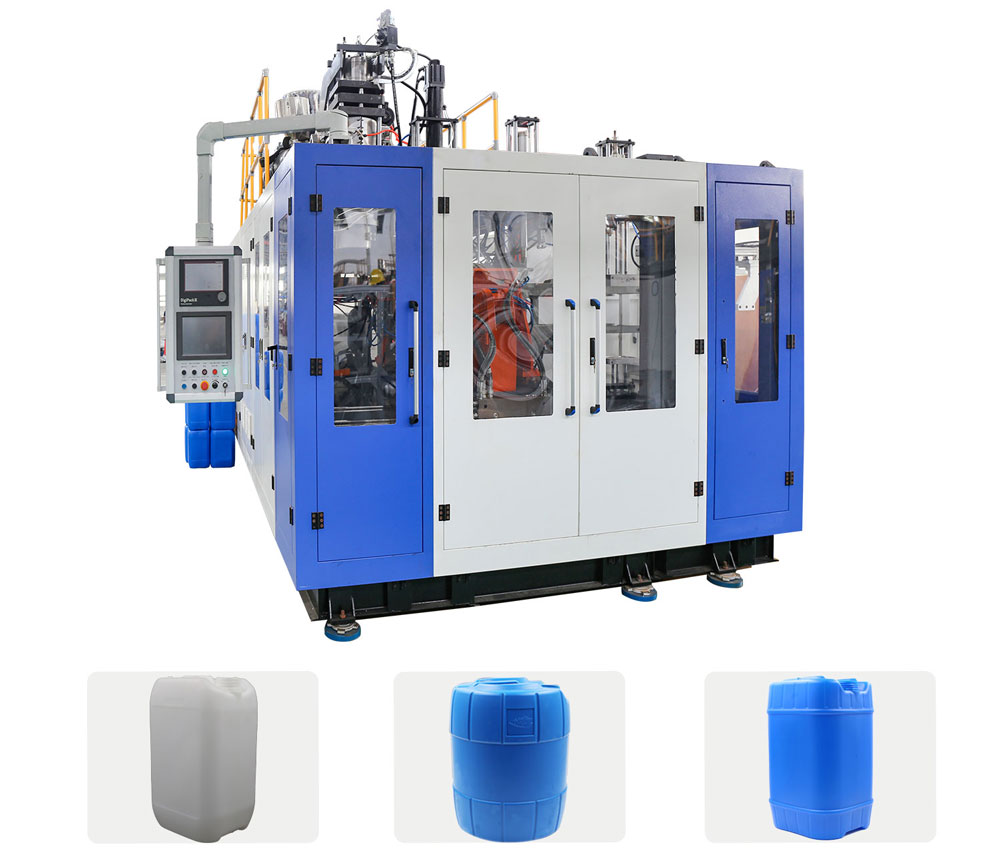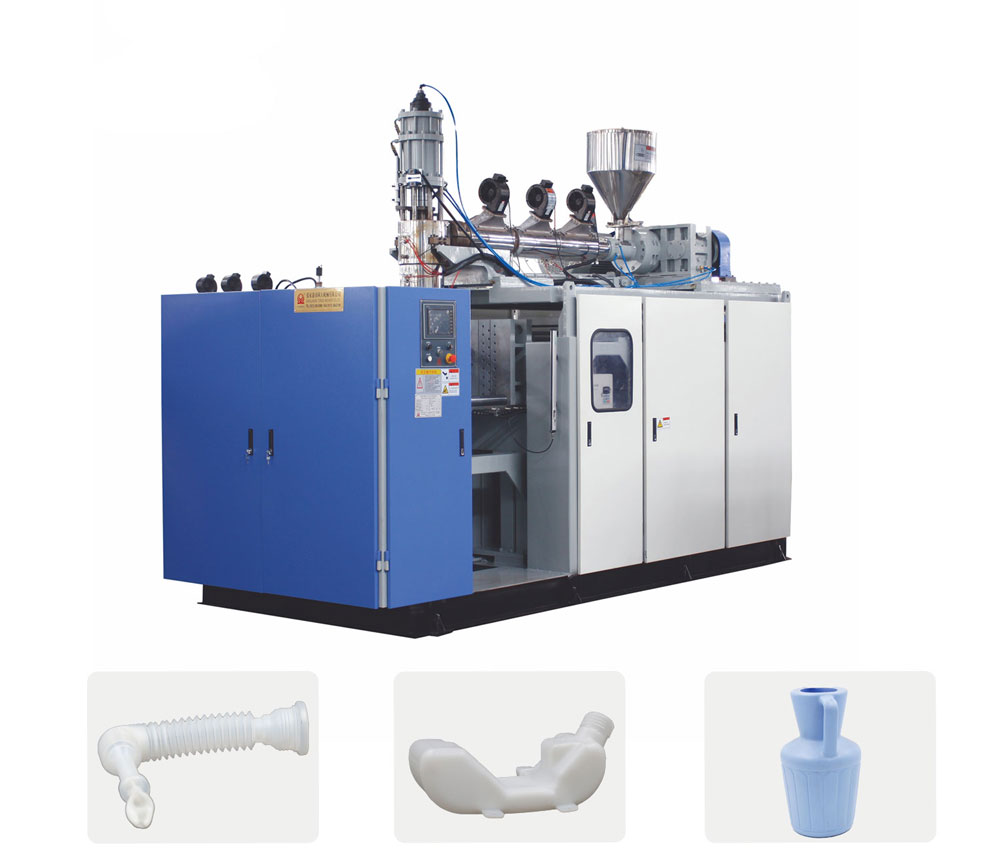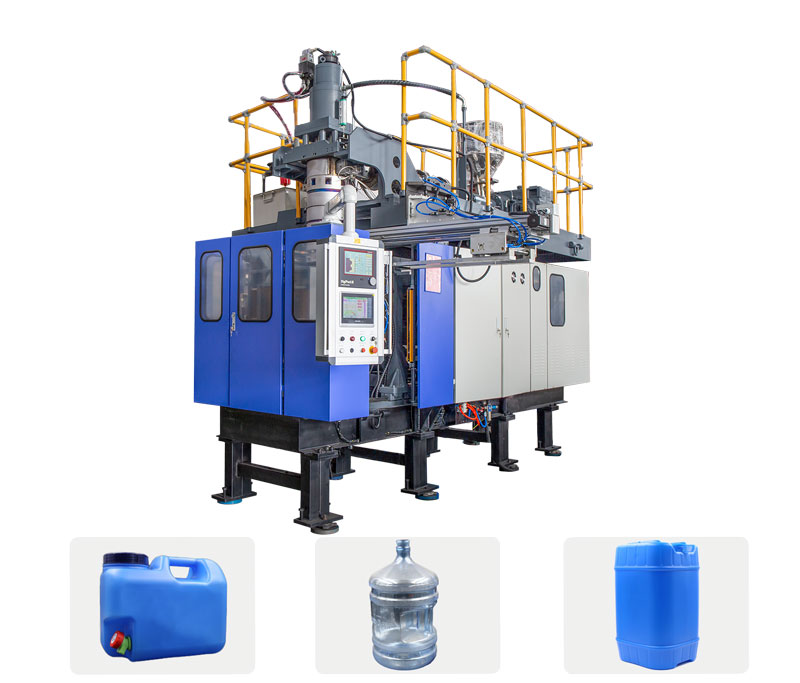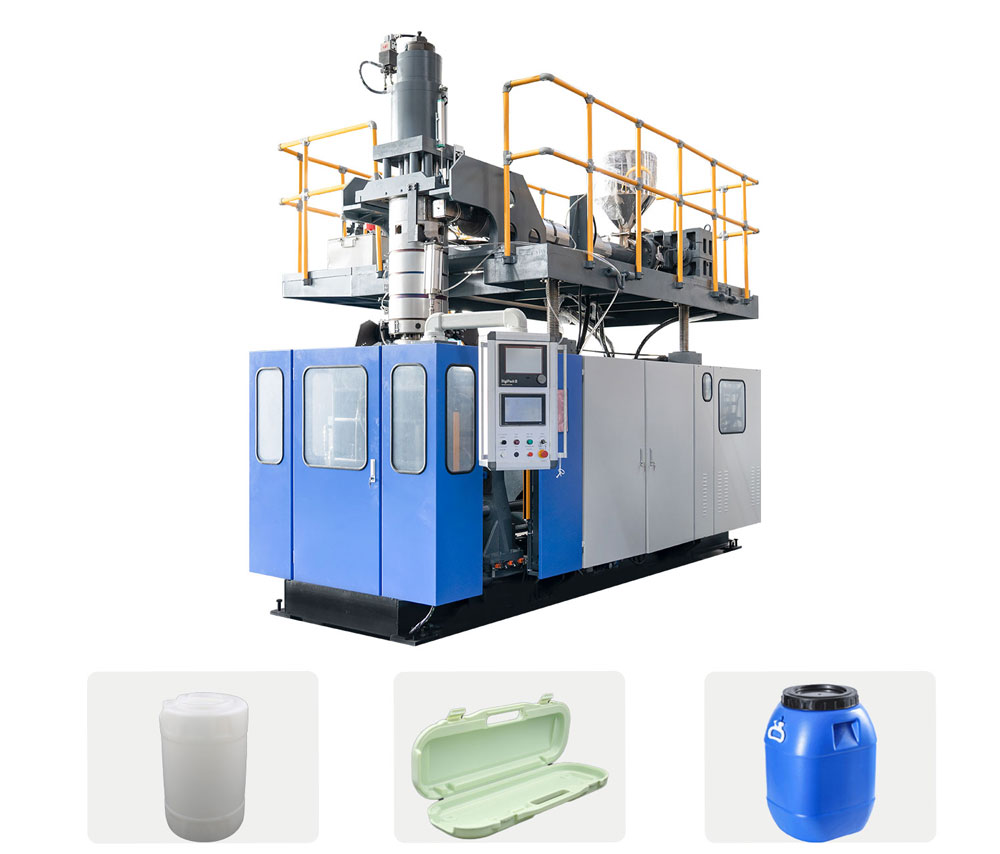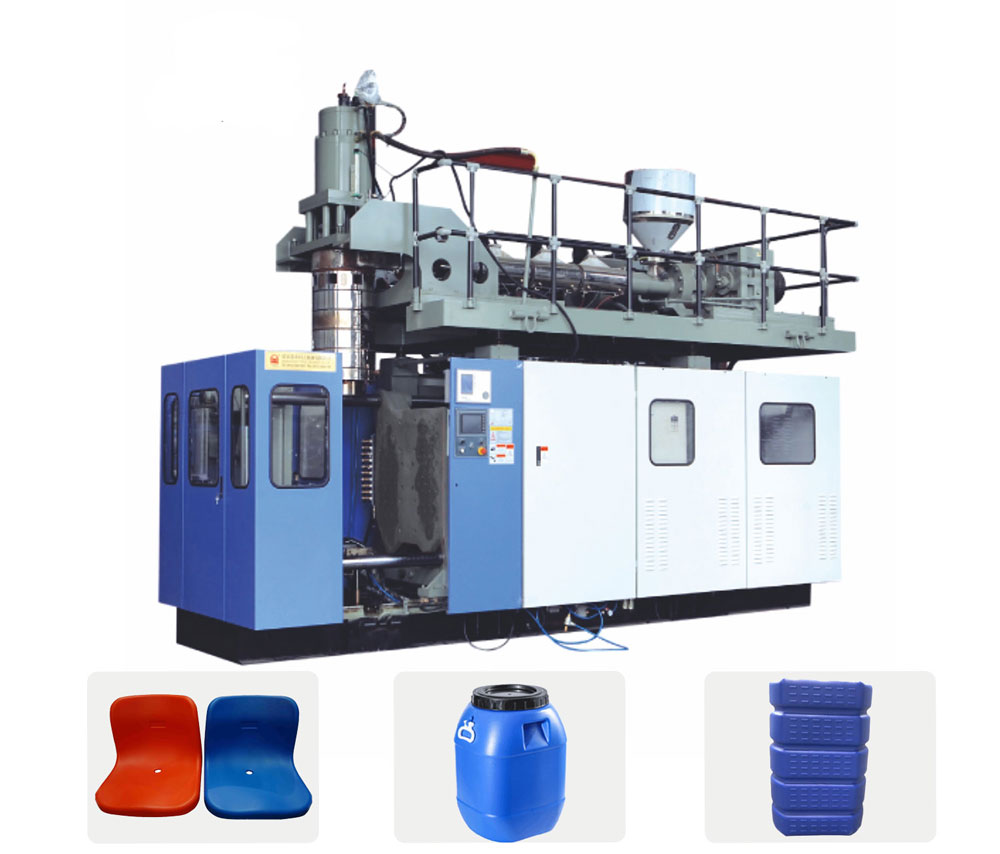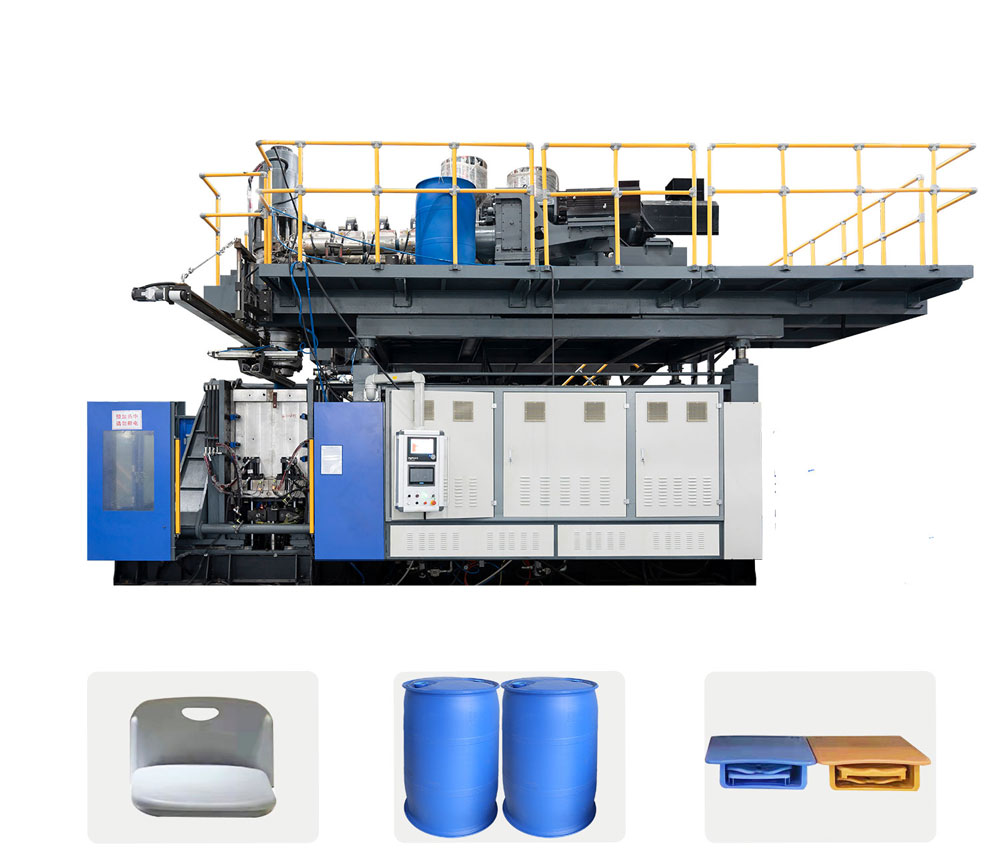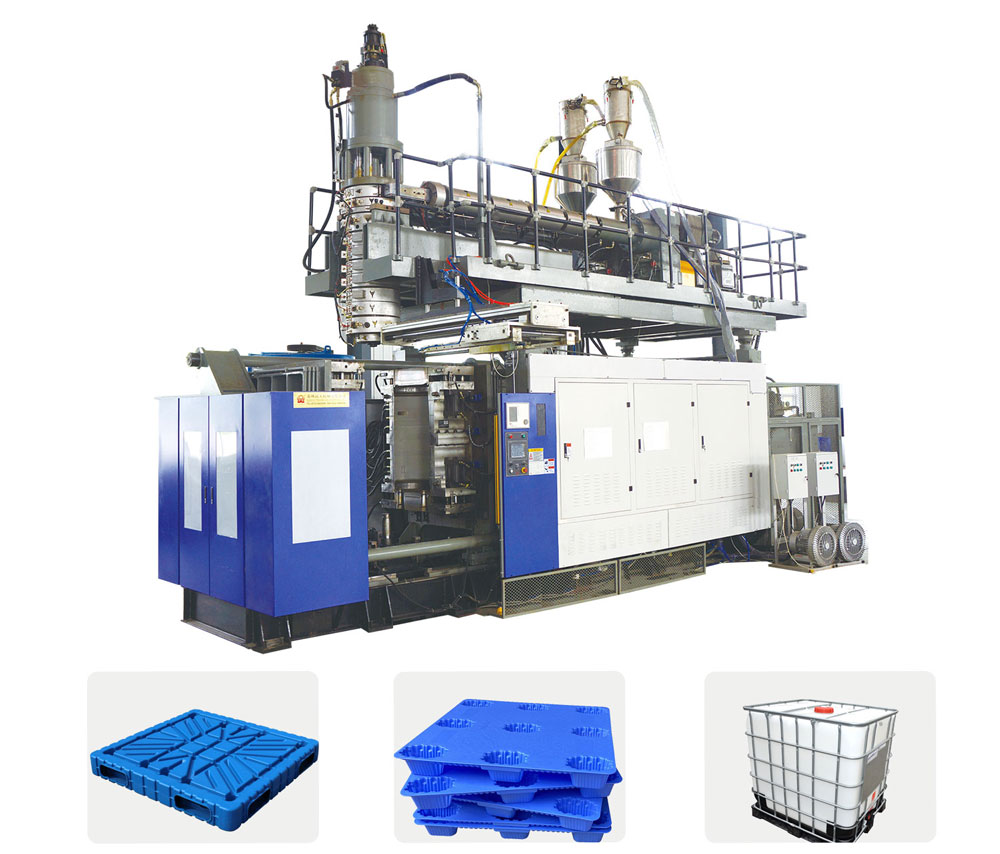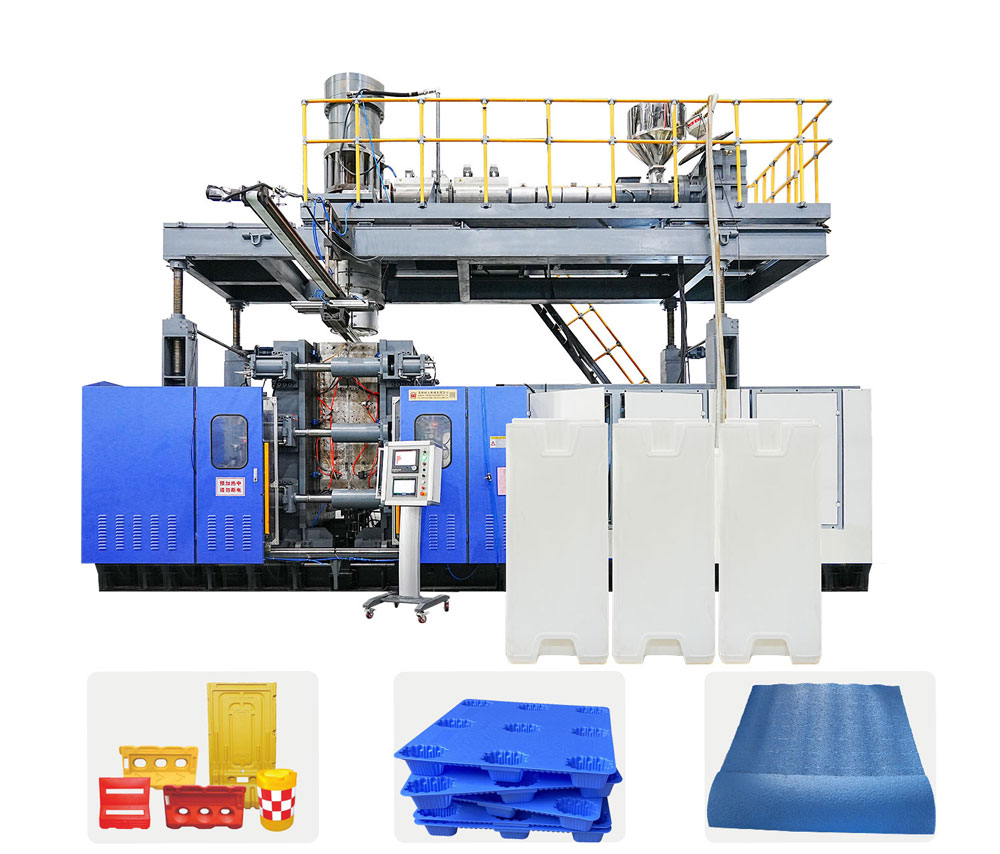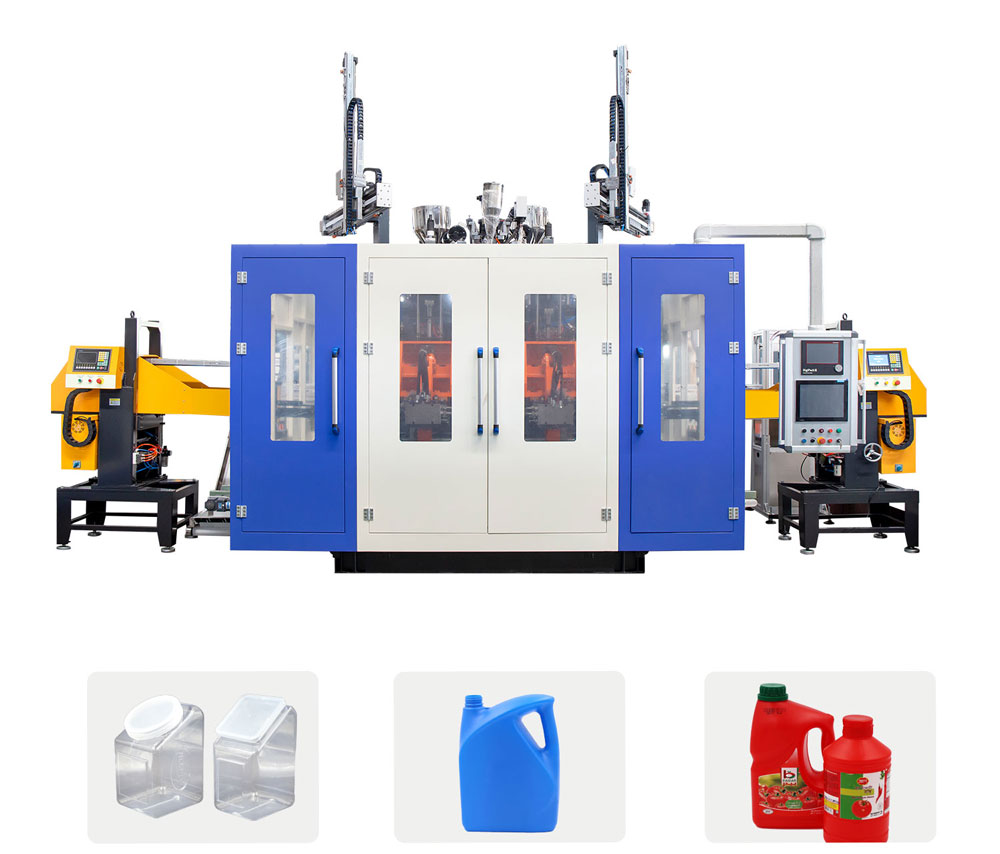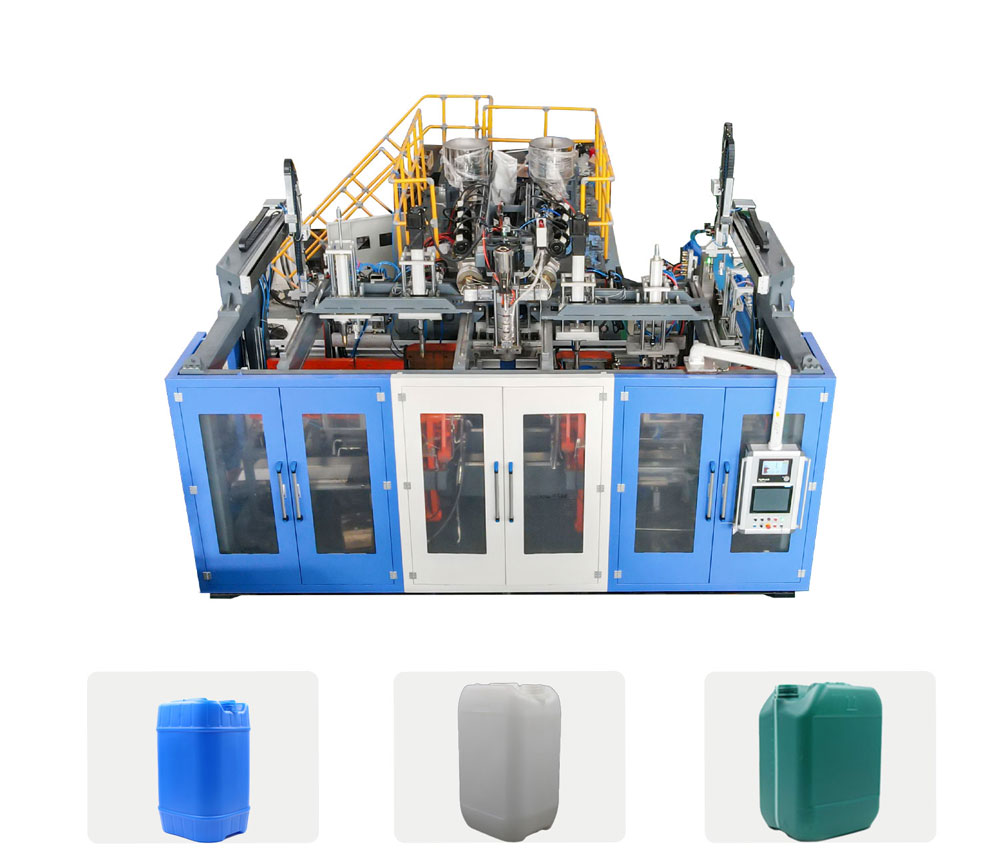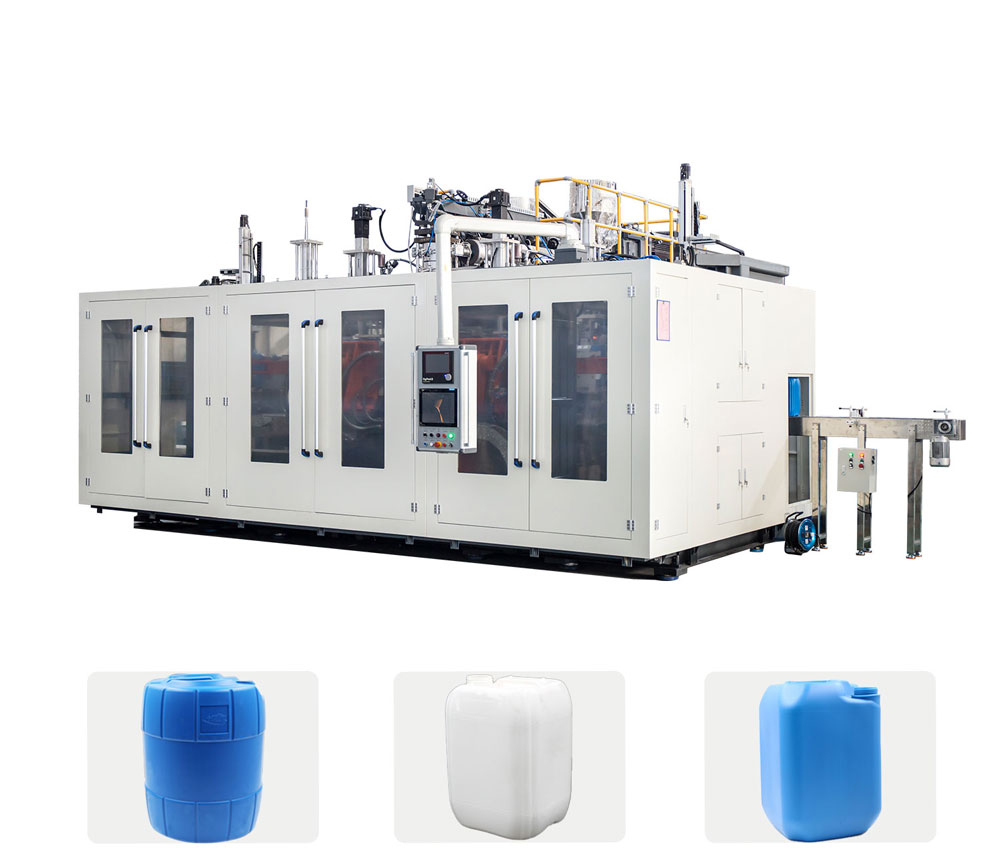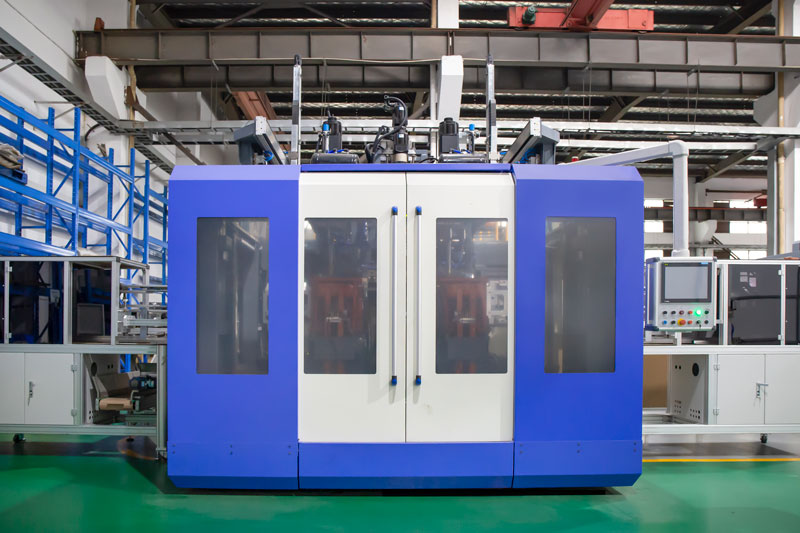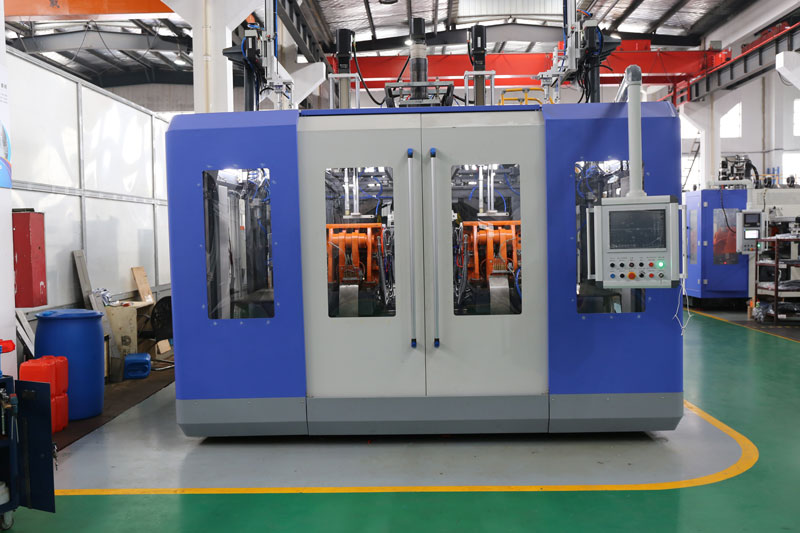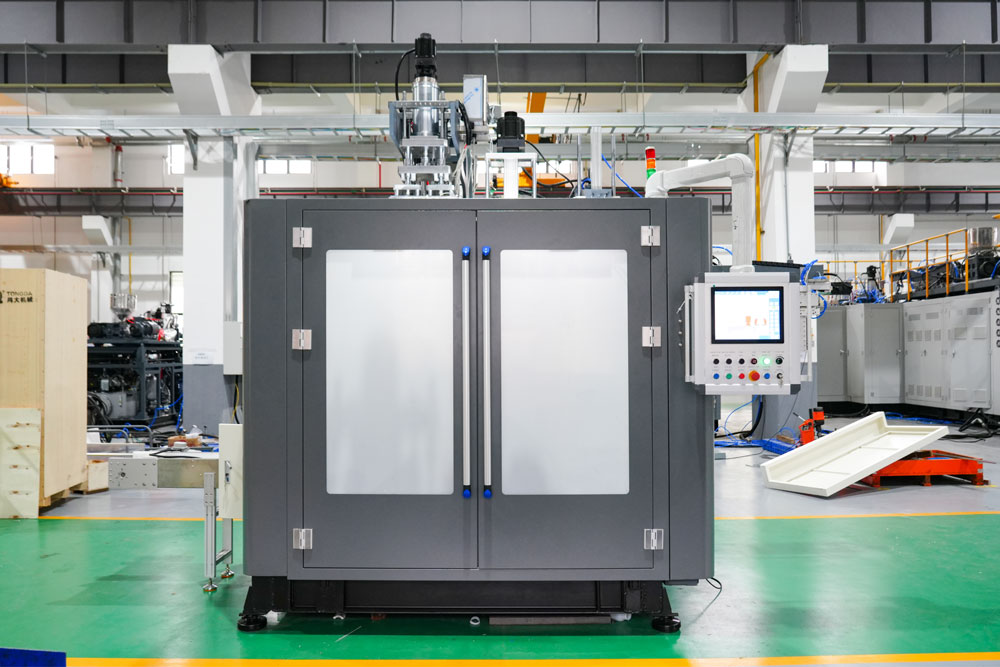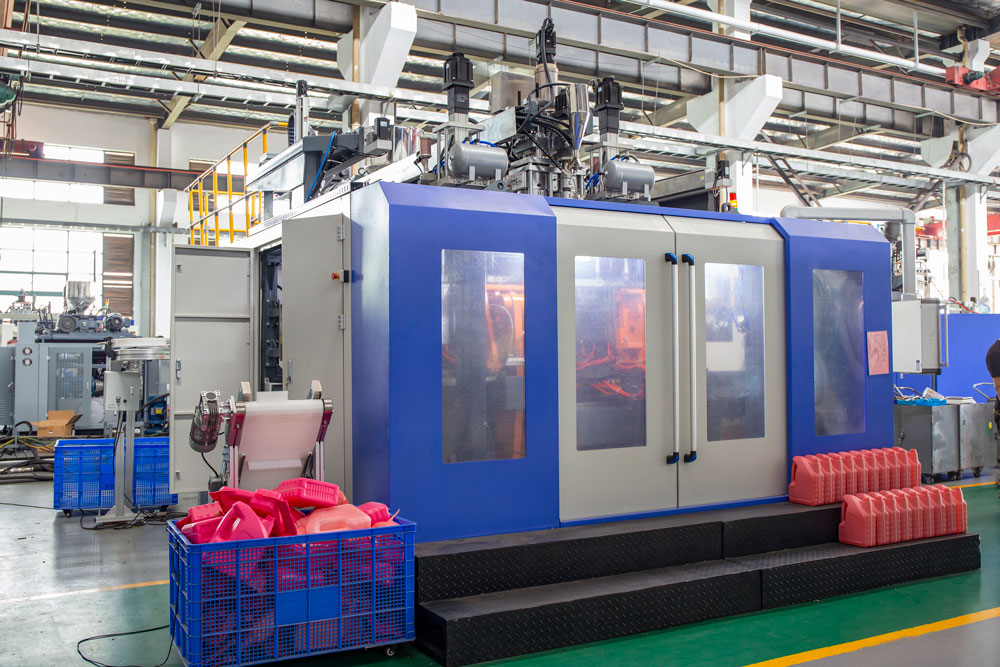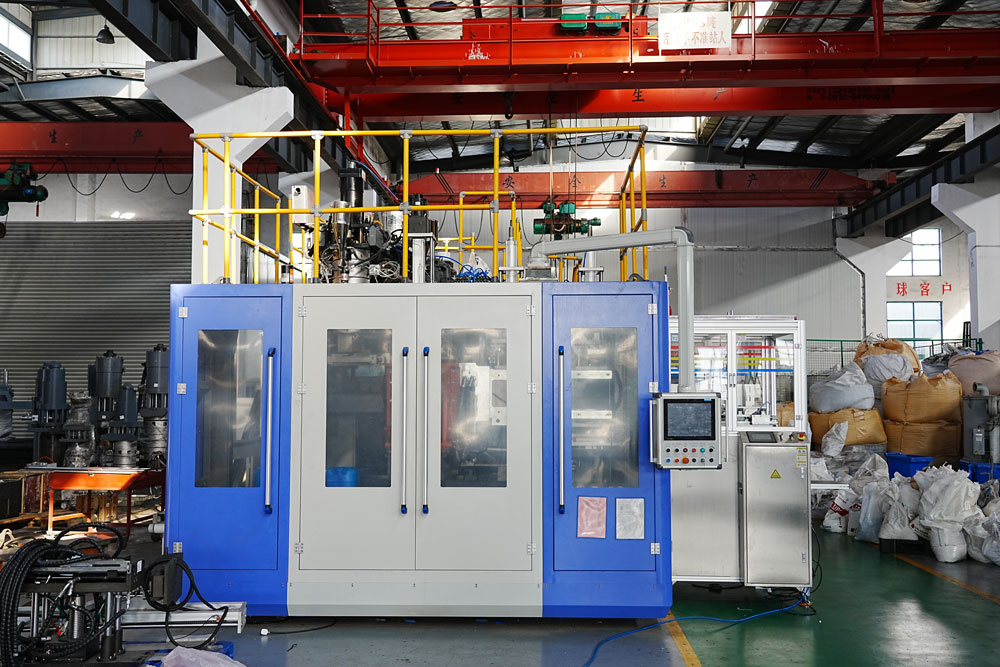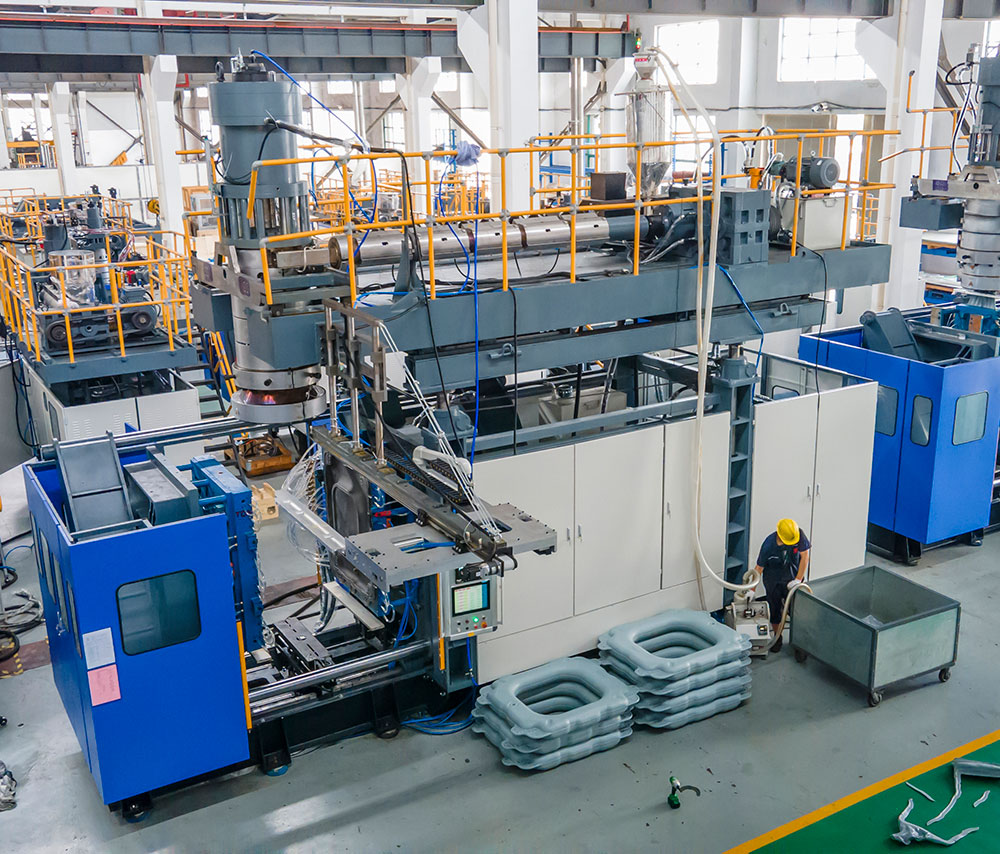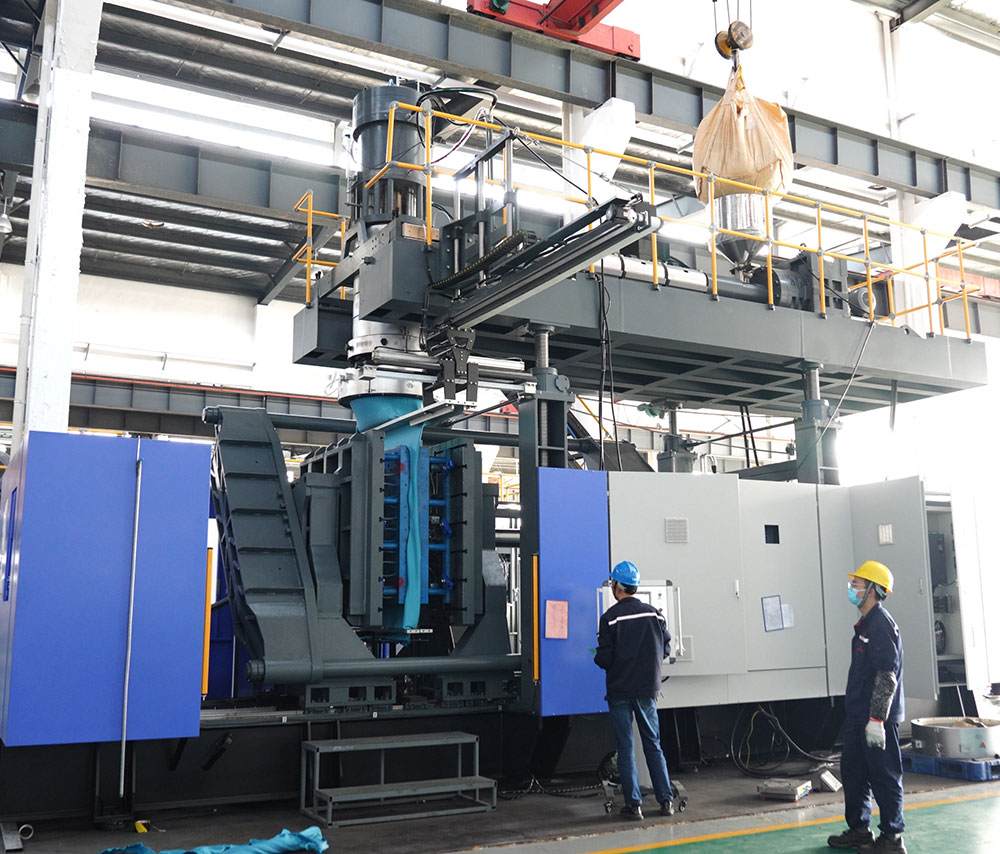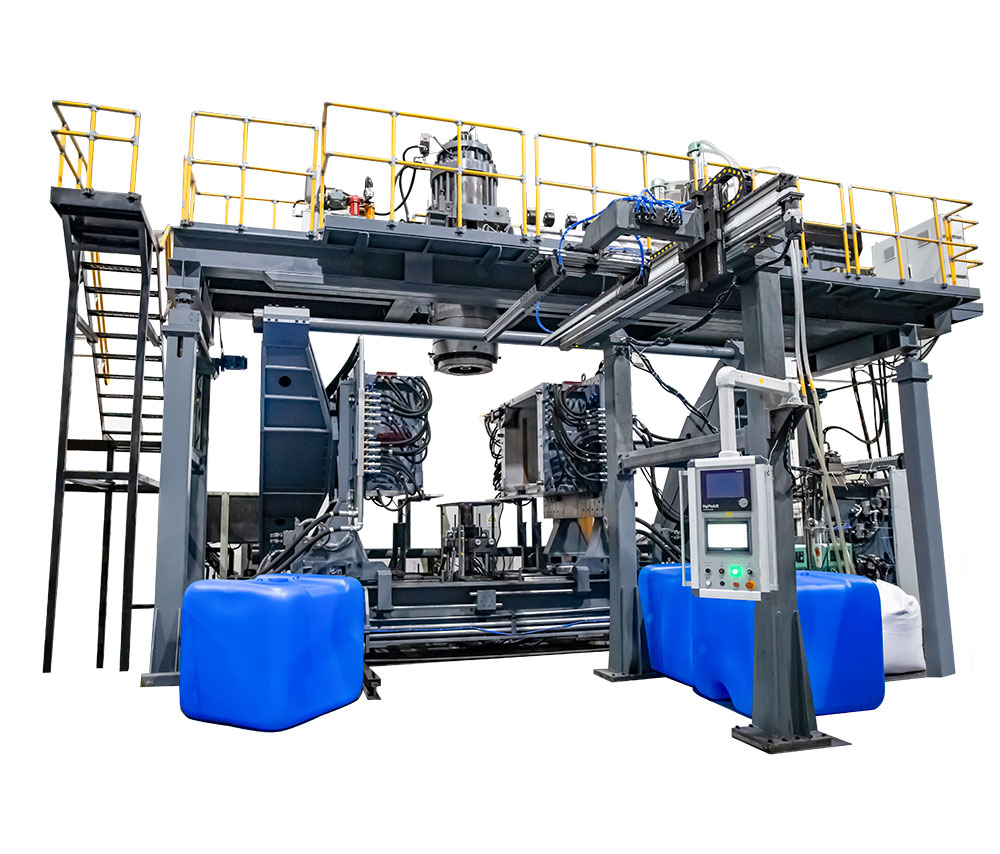
Hydraulic blow molding machine
Servo blow molding machine
Fully electric blow molding machine
Other series
- What is blow molding machine?
- How the blow molding machine works?
- The difference between extrusion blow molding machine and PET bottle blowing machine?
- Application areas of blow molding machines
- Types of blow molding machines
- Important systems of blow molding machines
- Top blow molding machine manufacturers
What is blow molding machine?
How the blow molding machine works?

1. Material Preparation
Blow molding typically uses thermoplastic materials like polyethylene, polypropylene, and PET. These materials are fed into the machine in the form of small pellets or granules.

2. Melting and Extrusion
The plastic pellets are fed into an extruder, where they are heated until they melt and become pliable. The extruder has a screw mechanism that pushes the molten plastic through a die head, forming a hollow tube-like structure called a parison.

3. Parison Formation
The parison, a preform of the final product, is extruded vertically downward between two halves of a mold. The parison can be extruded continuously for continuous extrusion blow molding or intermittently for intermittent extrusion blow molding.
4. Mold Clamping
Once the parison reaches the desired length, the two halves of the mold close around it. The mold is designed with the shape of the final product. In injection blow molding, the parison is preformed in a separate injection mold before being transferred to the blow mold.

5. Blowing
After the mold closes, a blow pin or a needle is inserted into the parison. Compressed air is then blown into the parison, inflating it and pressing it against the interior walls of the mold. This process shapes the parison into the final form of the product.

6. Cooling
While the plastic is still in the mold, it is allowed to cool and solidify. Cooling can be achieved through various methods such as air cooling, water cooling, or a combination of both.
7. Mold Opening and Ejection
Once the plastic has cooled and hardened, the mold opens, and the newly formed product is ejected from the mold. The excess material (flash) from the parison that extends beyond the mold cavity can be trimmed off in a subsequent step.

8. Trimming and Finishing
The final step involves trimming any excess plastic, performing quality checks, and finishing the product as needed. The excess material can often be recycled and reused in the process.
The difference between extrusion blow molding machine and PET bottle blowing machine?
Extrusion blow molding (EBM) machines and PET bottle blowing machines (typically referring to stretch blow molding or SBM machines) are both used in the production of hollow plastic products, but they operate differently and are suited for different types of materials and products. Here are the key differences between the two:
1. Material Used
Extrusion Blow Molding Machine:
Typically uses materials like polyethylene (PE), polypropylene (PP), and polyvinyl chloride (PVC).
These materials are suitable for products requiring durability and flexibility.


PET Bottle Blowing Machine:
Specifically designed for polyethylene terephthalate (PET).
PET is chosen for its strength, transparency, and barrier properties, making it ideal for beverage bottles.
2. Process
Extrusion Blow Molding:
Parison Formation: The process begins with extruding a parison (a hollow tube of molten plastic) vertically between two halves of a mold.
Blowing and Shaping: The mold closes around the parison, and air is blown into it, inflating the parison to conform to the mold’s shape.
Cooling and Ejection: The molded plastic cools, hardens, and is ejected from the mold. Any excess material is trimmed off.

PET Bottle Blowing:
Injection Molding: The process starts with injection molding a preform. The preform is a small, thick-walled version of the final bottle shape.
Reheating: The preform is then reheated to a temperature suitable for blowing.
Stretch Blowing: The heated preform is placed in a blow mold where it is stretched both axially and radially using a stretch rod and air pressure, forming the final bottle shape.
Cooling and Ejection: The bottle is cooled and ejected from the mold.

Application areas of blow molding machines
Daily Chemical
Daily chemical bottles are the most common blow molded products in our lives. The market and consumption are very large, such as shampoo bottles, laundry detergent bottles, toilet cleaner bottles, disinfection water bottles and so on.
The corresponding models are:
Jerry Can
Gallon Water Bottle
PC gallon buckets are drinking buckets with a very high recycling rate in the market. Drinking water is a necessity in our lives, and drinking buckets are also a product with very large supply and demand on the market.
The corresponding models are:
Chemical Drum
IBC Tank
Types of blow molding machines
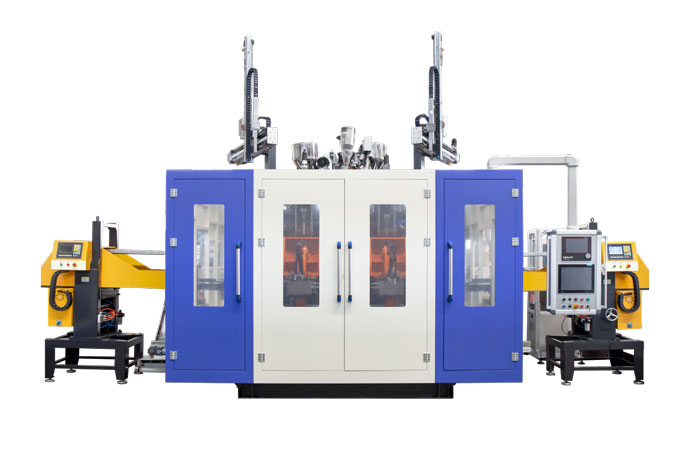
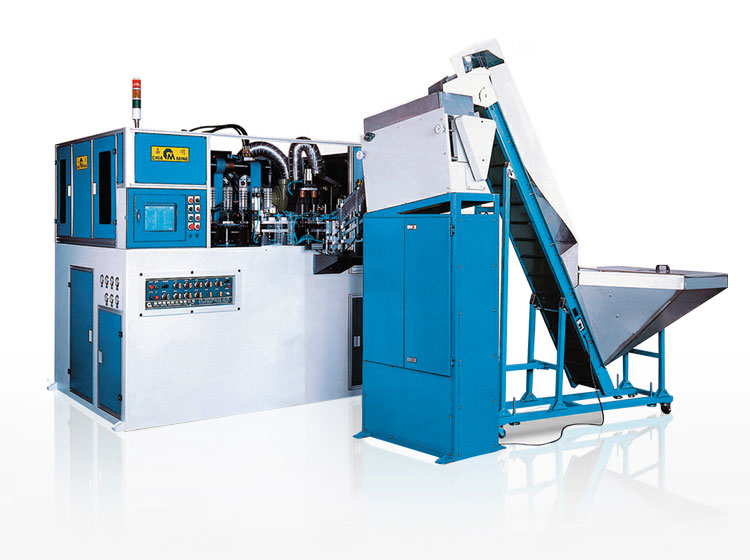
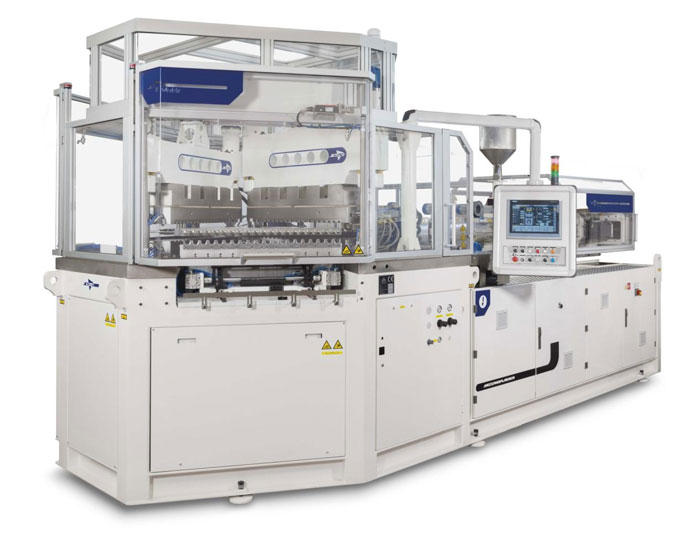

Important systems of blow molding machines
1. Extrusion System
Function: Melts and extrudes the plastic material into a parison (a hollow tube).
2. Injection System (for Injection and Stretch Blow Molding)
Function: Creates a preform by injecting molten plastic into a mold.
3. Clamping System
Function: Holds the mold halves together during the blow molding process.
4. Blowing System
Function: Inflates the parison or preform to take the shape of the mold.
5. Cooling System
Function: Cools the molded plastic to solidify it and retain its shape.
6. Ejection System
Function: Removes the finished product from the mold.
7. Parison Control System
(for Extrusion Blow Molding) Function: Controls the thickness and uniformity of the parison.
8. Stretching System (for Stretch Blow Molding)
Function: Stretches the preform both axially and radially to improve material properties.
9. Automation and Control System
Function: Manages and controls the various operations of the blow molding machine.
10. Material Handling System Function: Manages the input and output of raw materials and finished products.
